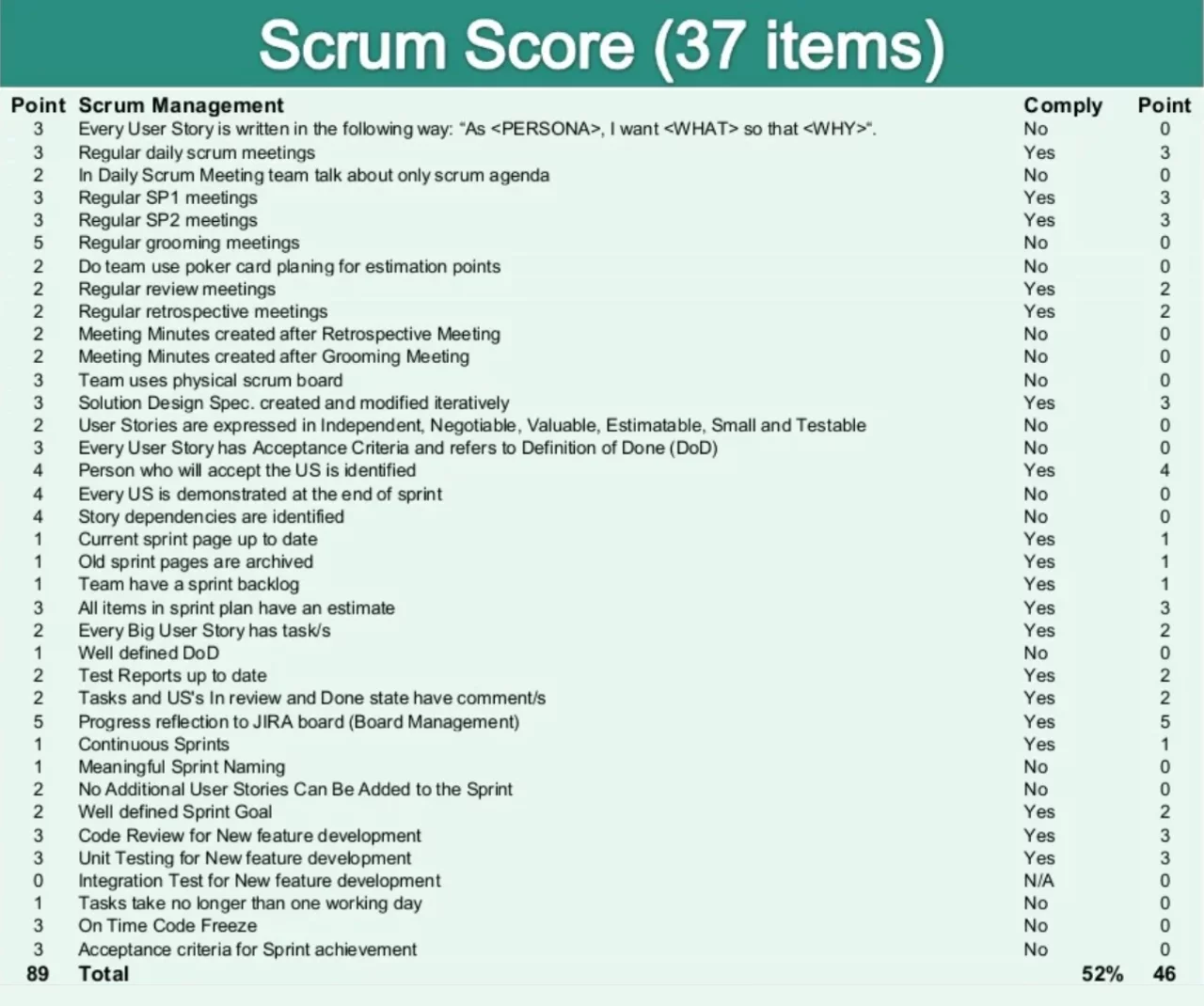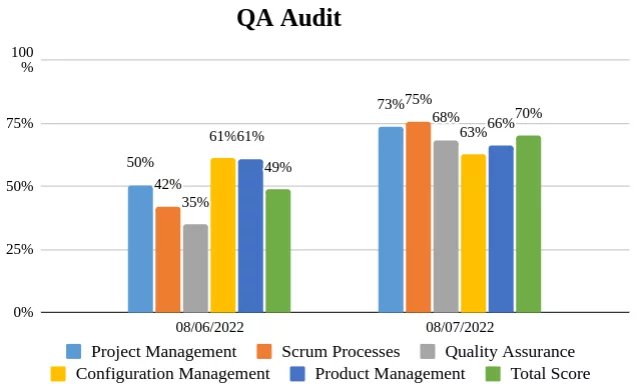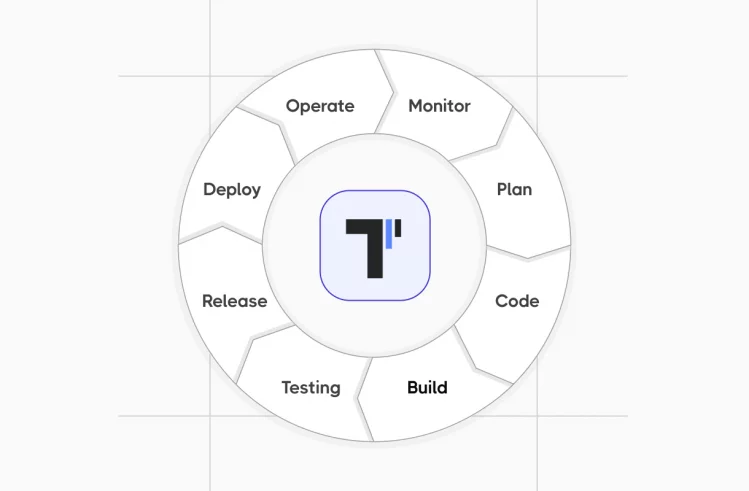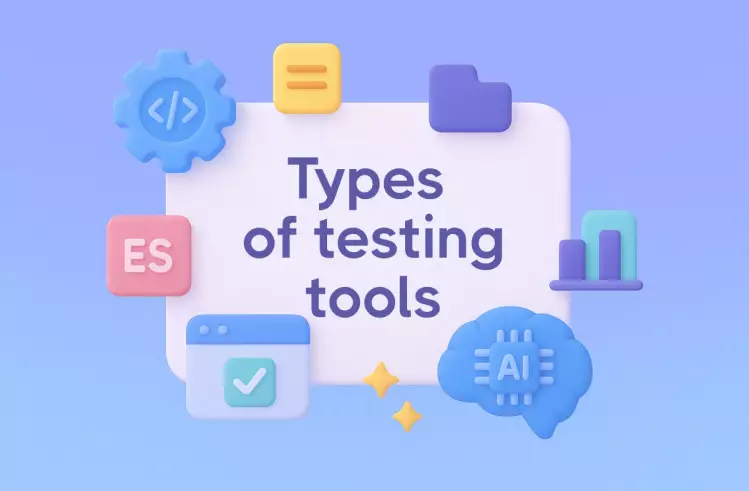Quality Assurance and Audit are two very different matters, however, when the two are married together, QA Audit becomes a powerful tool to meet quality standards and improve the reliability of software products.
What is QA audit?
A quality assurance audit is an independent evaluation of software and its development process. It is documented process, performed in a planned manner by competent personnel with the objective of evaluating the program by the requirements and acceptance criteria of quality the customer expectation.
Thus, the key purpose of a Quality Assurance Audit in Software Testing is to continuosly improve QC/QA testing processes and ultimately build confidence in your product. Regarding QA audit goals, QA audit tasks should be identified according to the needs of your project and business goal in compliance with your testing process, product specification or QA team skills.
QA audit should be done in the next situations:
#1: The problems with the quality of products
The common red flags of poor software quality are bugs in production, bad customer feedback, software failures, gaps, errors, crashes, security issues or performance problems.
#2: Software testing process issues
There is no understanding of how a testing process should work. What and for what? There is no systematic process. The QA team clearly does not know the sequence of their actions. They miss testing steps and do not meet deadlines. QA managers are too worried about operational issues and other ones.
#3: Unification needs
The Quality Assurance Audit should be a way of standardization. By implementing an audit, an Agile team can develop standards across different projects. These gained standards ensure the equivalent comparison between other projects in the company.
#4: Passion to grow and work better
For a company, this means scaling and income growth. As for the QA engineer, it is aligning the corporate’s interest with self-interests.
#5: Necessity to improve the maturity level of company and projects
Your software needs an audit to meet specified standards or certification requirements, legal requirements or licensing compliance – like popular CMMI certifications, IPO Certification and other certifications that require process improvement. In this way, top management expects to capture new customers with ones.
QAs Role in Audit and Inspections
Whether you have worked in a company for a long time or just started, it’s essential to manage the QA audit process. You can conduct a quality assurance audit if hold the following positions:
- QAs
- QA Manager
- QA Lead
- Team Lead
- QA Coordinator
- etc. note by any person responsible for product quality
Who needs a Software Quality Audit?
Let me stress again, a general QA engineer might be the initiator conducting a quality assurance audit to monitor the efficiency of the current QA testing efforts along with investors who want to reduce their risks with a big picture. Therefore, the audit is a win-win for both. And as follows ⬇️
There are internal and external types of QA Audits:
- Internal audits are usually performed by the internal QAs within an organization and cover activities that may directly influence on product quality.
- External or third-party QA Audits are performed by independent software testing service companies or individual QA professionals (external auditors, consultants) who have deep knowledge and skills in particular areas. For instance: API testing, Automation testing, Performance testing, Security testing, Usability and accessibility audits etc.
In addition, many other types of reviews:
- Risk Assessment Audit
- Process Audits
- Product Audit
- System Audit
- Compliance Audit
- Pre-production inspections
- During production Inspection
- Pre-release inspection
- etc.
How to perform a QA audit? Comprehensive Checklist
In my view, auditing shouldn’t be a chaotic process caused by a spontaneous decision. It should be a controlled process with a well-defined strategy. That’s why QA Audit in software development generally includes the following four phases:
1. Audit Planning
2. Audit Execution
3. Audit Reporting
4. Audit follow-up and Closure
However, many organizations may apply their own steps in the auditing test and development process. A good practice is to have a less detailed software audit program, which helps in smart spending audit resources as well as demonstrates alignment of the audit strategy. Let’s look at each of these points in detail!
#1 Audit Planning
I usually plan QA reviews in advance. Break them into a series of tasks that have been previously identified as corresponding to the company’s objectives. The primary objective of my Quality Assurance Audit is gathering information related to the ongoing status of a process and then applying it to impact SDLC areas that we want to improve against defined criteria. Any findings can become the basis for improvement activities.
Areas my team include in SDLC quality audit
- Project Management
- Scrum process
- Quality Assurance
- Configuration Management
- Product Management
What effect do we get inspecting these areas:
- Transparency improvement
- Understanding of real situation
- Defined system of metrics
- Results analysis
- Growth zone
- Metrics of result
- Measure of Not Degradation Level
#2 QA Audit Execution
I create a quality audit checklist to ensure that my team does not miss any auditing tasks, we perform them and then I match the audit results.
Throughout this article, I would like to share my great QA professional experience and make your QA work easier! So, take this FREE for QAs quality audit template. You can use this Quality Assurance Audit checklist as a basis as well as improve it for your project needs.
Have you downloaded this QA Audit checklist? Great! Come on, look briefly at the short instruction below on how you should work with the announced checklist.
Order of audit steps
| 1. | Find a responsible person – the best is Project manager(PM) or Product manager(PO) |
| 2. | Schedule the meeting for 1-2 hours and set Audit Date (column E row 1) |
| 3. | Go through all the points of audit from the downloaded table |
| 4. | Calibrate every point regarding the weight – 1-5 (column A) |
| 5. | Set preliminary mark Yes/No (column C) and set comments or tasks to improve |
| 6. | It can be set partly as No with 1-2 points (column D) and comment (column E) |
| 7. | After completing all marks there will see result in % per every area (column D rows numbers 170-175) |
| 8. | It will reflect in Bar Chart and under Audit Date (column D rows 2-7) |
| 9. | On the new audit, you can add 4 columns after column F and copy columns C – F there to change the date and run a new audit |
| 10. | Then update Bar Chart with new data and you’ll see the progress |
| 11. | After getting results, define areas and points to improve and set exact tasks for that in Task Management System and set links to tasks in appropriate cells |
Now, let’s look at a real quality audit example based on one of the areas chosen by my software development company. I assign points when I communicate with the person responsible for this task. I play the role of an impartial person. To guard against bias, I form an audit team, so that each team member has their own area of responsibility. For example, one team member performs marks while another evaluates the results.

In the column on the right side, you can see the maximum of an achieved score. And on the left side, you can see the actual result. Mark data presence as Yes\No.
If there are no auditing data to be evaluated, but the parameter is crucial for us, we estimate the audit checklist task as ZERO. If there is no data and this parameter is not critical for us, then it does not take part in the calculations. But it is displayed as N\A in the audit checklist because the circumstances may change in the future.
During inspection, use the following QA Audit tools:
- questionnaire
- evaluating
- retrospective analysis
- comparison
#3 Audit Reporting
An audit gives some information about the current project status. This status is possible to measure against another period (names retrospective). I conduct this audit checklist every 2 weeks. But you a free to set up another audit timeline.
This retrospective view allows to control degradation trends by tracking our level. So, it is very important for me.

#4 Audit follow-up and closure
The audit report outlines the inspection results as a whole, providing conformances, and nonconformances found along with any recommended corrective actions that need to be taken.
It is a Good Practice to let the auditing professionals incorporate their recommendations.
To complete our SDLC Audit we should schedule a team meeting to address problems and document actions a team have to take to correct identified fails. We use the Jira task manager to assign those tasks to a responsible person who will make them directly during the meetings.
Wrap-up: QA Audit Benefits
- Shows areas for improvement. Even if you think that your current solutions work well, there are always things that might be done better. So, find them with QA Audit.
- Knowledge transfer. A key point in the Quality Assurance Audit process is the potential for learning and knowledge transfer within a team. A person who has a good understanding of the product or process can use the audit checklist as a form of sharing app knowledge and explaine the reasons for particular requirements, tasks or test points.
- Increasing customer satisfaction. By tracking software development trends and competitors, deliver to your customers a modern and necessary product.
- Quality costs and profitability control. SDLC audit also includes due diligence on your current infrastructure and the profitability of modernizing it. The current review lets you investigate any hidden costs associated with further development. This allows you to get a grip on the risk factor of any subsequent investments. The future maintainability of your software architecture and the costs connected to it is also an issue that’s often covered in software quality audits.
- Mitigating potential risks. Ideally, a critical Audit is based on identifying potential risks. A good practice is to have a risk management process in place to the various risks to an organization, including safety, quality, reliability, financial, reputational, etc. These Audits are then planned in accordance with the risk levels identified. The greater the risk is, the more frequent and detailed the level of quality assurance audit should be performed.








